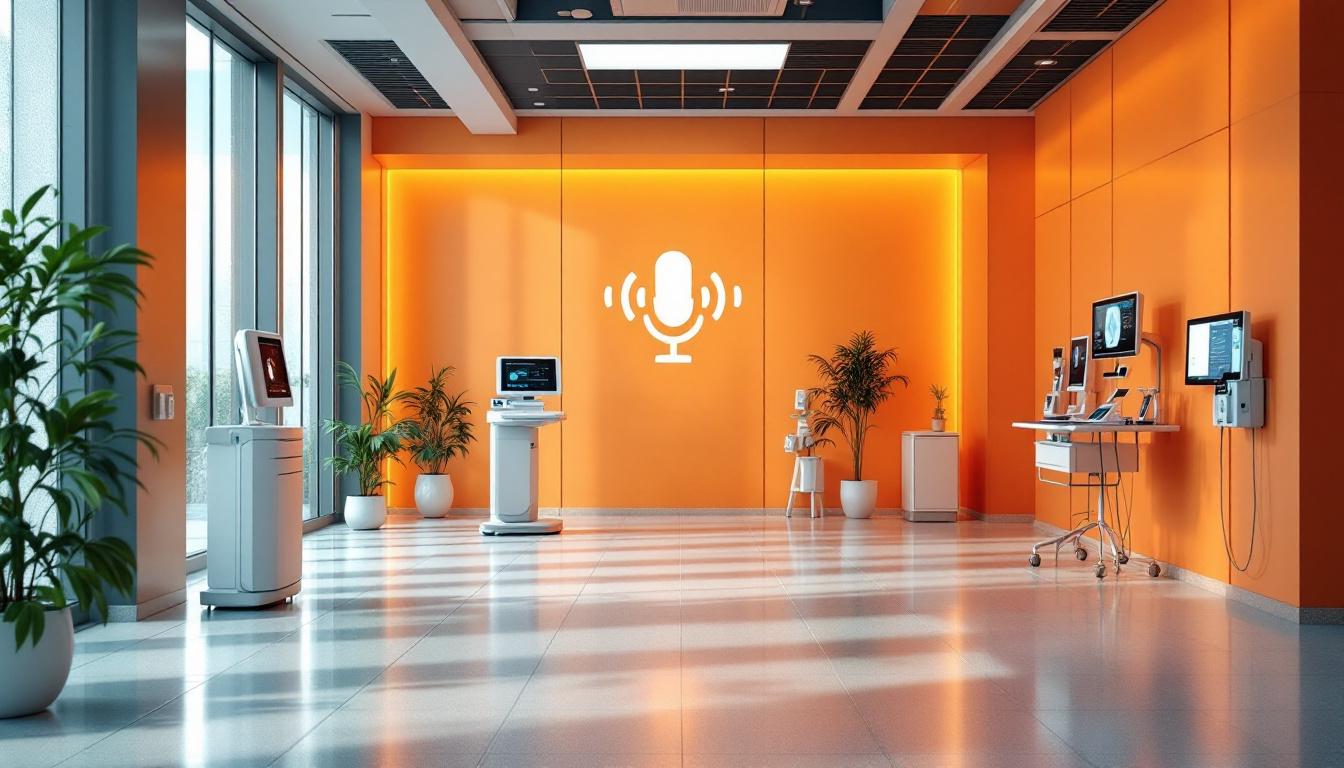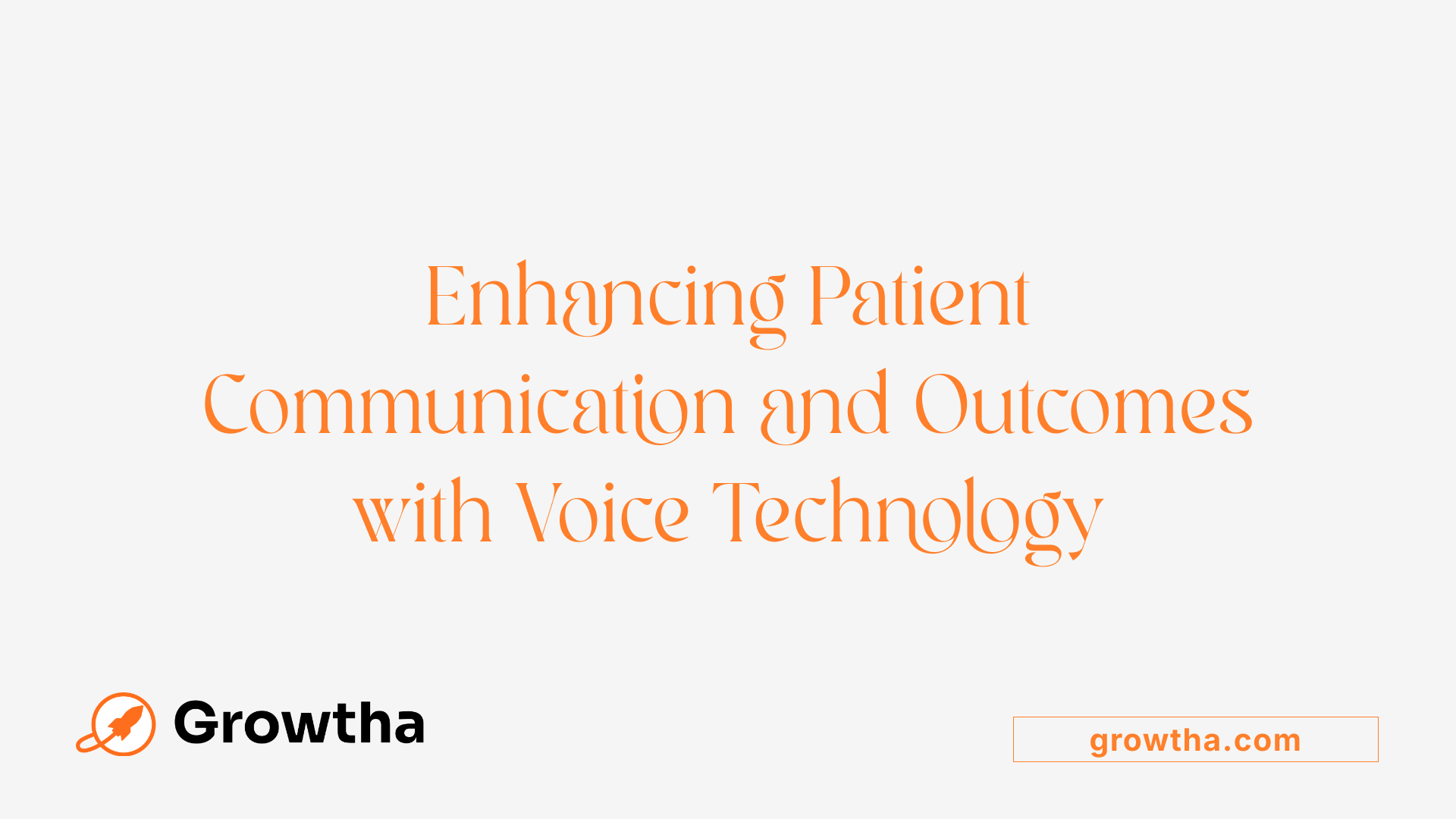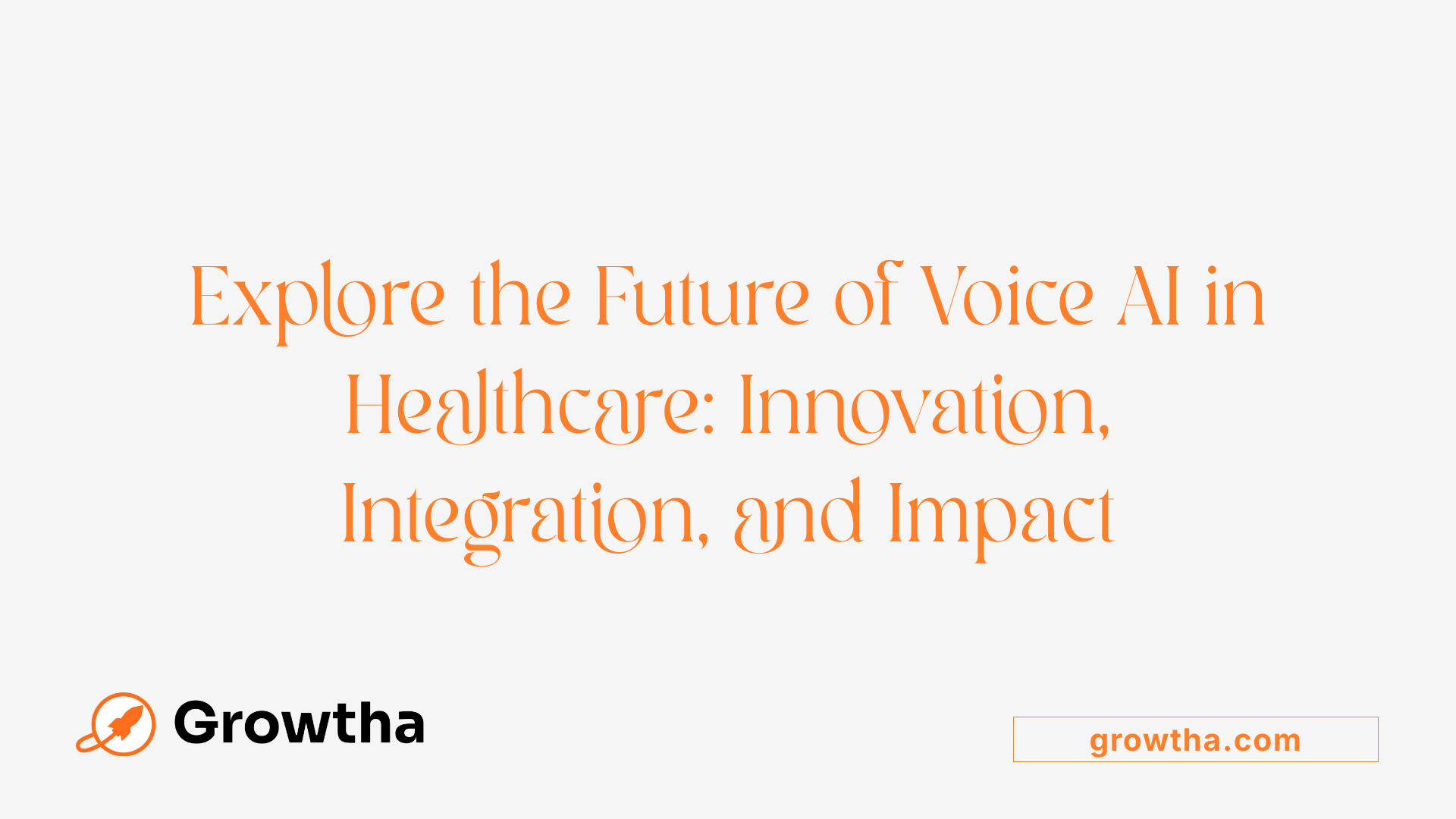The Role of Voice Assistants in Patient Engagement
Transforming Healthcare with Voice-Activated Technologies


The Role of Voice Assistants in Patient Engagement
Introduction: Revolutionizing Patient Engagement through Voice
Voice assistants are emerging as transformative tools in healthcare, redefining how providers communicate with patients, streamline operations, and deliver personalized care. Leveraging advancements in artificial intelligence (AI), natural language processing (NLP), and emotional recognition, these tools foster more intuitive, empathetic, and efficient engagements. This article explores the capabilities, benefits, challenges, and future prospects of voice assistants, emphasizing their critical role in enhancing patient experiences and healthcare delivery.
Capabilities and Functionalities of Healthcare Voice Assistants
What are the capabilities of AI virtual assistants in healthcare?
AI virtual assistants in healthcare are transforming the way medical services are delivered and managed. They come equipped with a broad spectrum of functionalities designed to enhance operational efficiency and elevate patient care.
One of the primary roles these assistants play is automating routine administrative and clinical tasks. This includes scheduling appointments, managing patient data, updating electronic health records (EHRs), and processing billing and insurance claims. Automation not only speeds up workflow but also reduces human errors and staff workload.
Beyond administrative support, these assistants actively engage patients by tracking symptoms, sending medication reminders, and facilitating follow-up care. They communicate using natural language processing (NLP) and understanding capabilities, making interactions more intuitive and human-like. Patients can inquire about their health, ask questions, and receive personalized advice, which boosts patient engagement and compliance.
Advanced voice-controlled AI assistants excel at processing real-time human requests. They can interpret complex queries, provide immediate responses, and perform tasks on the spot, greatly improving responsiveness in healthcare settings.
Health monitoring is another critical function. These assistants can integrate with wearable devices and IoT (Internet of Things) sensors to track vital signs, monitor chronic conditions, and detect anomalies. For example, they may alert healthcare providers if a patient's blood pressure or glucose levels fall outside safe ranges.
Emotion recognition is an emerging feature that adds a layer of emotional intelligence, allowing assistants to identify signs of distress, depression, or other mental health concerns through speech patterns and tone analysis. This capability facilitates timely mental health interventions and supports emotional well-being.
Integration with IoT devices and comprehensive access to electronic health records ensure that healthcare providers have real-time, accurate information. This integration supports remote monitoring, enabling clinicians to keep track of patient health outside clinical environments and respond swiftly to emergencies or changes in condition.
Overall, AI virtual assistants in healthcare are versatile tools that combine automation, interaction, and monitoring capabilities. They support everyday clinical and administrative functions while providing a foundation for advanced, personalized, and proactive healthcare delivery. These technological advancements promise to increase access, reduce costs, and ultimately improve health outcomes.
Benefits of Voice Assistants in Healthcare

What are the benefits of using voice assistants in healthcare settings?
Voice assistants are rapidly transforming how healthcare providers and patients interact, bringing a host of advantages that enhance the quality, efficiency, and accessibility of care.
One of their primary benefits is improving workflow efficiency and automation. Voice assistants can handle routine tasks such as scheduling appointments, managing patient records, transcribing clinical notes, and updating electronic health records (EHRs). This automation reduces administrative burdens on clinicians, allowing them to dedicate more time to direct patient care. For instance, recognizing speech and converting it into precise documentation not only accelerates record-keeping but also minimizes errors.
Furthermore, they play a significant role in reducing clinician burnout. The heavy administrative workload is a common source of stress and fatigue among healthcare professionals. By taking over time-consuming tasks like dictation during patient encounters, voice assistants relieve this pressure. This leads to more accurate clinical documentation and quicker response times, thereby helping staff stay focused on empathy-driven patient interactions.
Enhanced patient engagement and satisfaction are vital outcomes of deploying voice technology. Patients, especially those with disabilities or mobility challenges, benefit from the hands-free, easy-to-use interfaces that facilitate appointment scheduling, medication reminders, and health education. Around 72% of patients report being comfortable using voice assistants for such tasks. This continuous, personalized engagement promotes adherence to treatment plans, improves health literacy, and fosters a sense of being cared for.
Remote and telehealth services also gain from voice assistant integration. During the COVID-19 pandemic, these systems proved crucial in guiding patients through virtual consultations, symptom reporting, and remote monitoring. Voice-enabled devices assist in real-time data collection, alerting clinicians about abnormal vital signs or symptoms. This constant connectivity allows for proactive intervention, especially in managing chronic diseases, reducing unnecessary hospital visits, and providing timely support.
Accessibility improvements for vulnerable populations are another noteworthy benefit. Voice assistants aid elderly patients, individuals with visual or cognitive impairments, and non-native language speakers. They enable these groups to navigate healthcare processes, understand treatment instructions, and communicate effectively with providers without physical or language barriers.
In sum, using voice assistants in healthcare offers substantial improvements in operational workflows, minimizes clinician workload and burnout, enhances patient engagement and satisfaction, supports remote healthcare delivery, and promotes inclusivity. These advancements not only streamline healthcare systems but also ensure more compassionate and accessible patient care, ultimately leading to better health outcomes and higher quality experiences.
Impact on Patient Communication and Outcomes

How can voice technology improve patient communication and outcomes?
Voice technology is transforming healthcare by making communication more accessible and efficient for patients and providers alike. These advanced systems enable hands-free interactions that allow patients to easily schedule appointments, manage medications, and access health information through simple voice commands.
For patients, especially those with mobility challenges, visual impairments, or language barriers, voice assistants provide an inclusive way to engage actively with their healthcare. For instance, elderly or disabled individuals can control room settings, receive medication reminders, or inquire about symptoms without needing to navigate complicated interfaces. This enhanced accessibility promotes adherence to treatment plans and supports better health outcomes.
Clinicians also benefit from voice technology through faster, more accurate documentation and real-time updates that reduce administrative burdens. Voice-enabled electronic health records (EHRs) allow providers to dictate notes during consultations instantly, minimizing errors and freeing up time for patient interaction.
In remote monitoring scenarios, voice assistants can collect and transmit vital signs, medication adherence data, and symptom reports. These inputs can trigger alerts if abnormal patterns are detected, enabling early intervention and preventing complications.
Emerging innovations harness natural language processing (NLP) and voice-based diagnostic tools to deliver personalized insights and support clinical decision-making. Artificial intelligence-driven voice analysis can even recognize emotional states, helping mental health professionals identify signs of distress or depression early.
Furthermore, multilingual capabilities in voice systems help bridge communication gaps in diverse populations, ensuring that health instructions are understood accurately to enhance compliance.
Overall, integrating voice technology streamlines interactions, boosts patient engagement, and fosters more personalized, accessible care. These improvements contribute to higher satisfaction, better adherence to treatment, and ultimately, improved health outcomes.
The Evolution and Future of Voice Assistants in Healthcare

What is the future of voice assistants and AI in healthcare?
The future of voice assistants and AI in healthcare promises a significant transformation in how medical services are delivered. The technology is moving toward higher levels of personalization, enabling virtual assistants to tailor interactions based on individual patient data and preferences. Integration with electronic health records (EHRs) will become more seamless, allowing voice systems to access and update patient information in real time, which enhances clinical decision-making and reduces administrative burdens.
Natural language understanding (NLU) will improve, resulting in more natural, human-like conversations. This will facilitate easier symptom assessment, health education, and diagnostic support through conversational interfaces. Additionally, AI-powered tools will incorporate predictive analytics to identify potential health risks early, enabling proactive intervention.
Innovative technologies like ambient sensing and contactless monitoring will allow continuous health tracking without intrusive devices, offering real-time insights into vital signs, symptoms, and medication adherence. These advancements will support remote patient monitoring, particularly for chronic disease management and elderly care, making healthcare more accessible outside traditional settings.
With ongoing improvements, AI-driven virtual assistants will become operational 24/7, providing consistent support that reduces clinician workload and helps to lower operational costs. Such tools will democratize healthcare access, especially in underserved and rural areas.
However, as these systems become more integrated and capable, ensuring data privacy, security, and ethical use will be vital. Responsible deployment will require clear standards and regulatory oversight to foster trust and equity in AI-enabled healthcare.
Implementing Voice Assistants in Healthcare Settings
What are the challenges and considerations in implementing voice assistant technology in healthcare?
Introducing voice assistant technology into healthcare environments offers many benefits, from streamlining workflows to enhancing patient engagement. However, successful implementation requires addressing several significant challenges and considerations.
One of the foremost issues is ensuring data privacy and security. Healthcare data is highly sensitive, and voice systems must comply with strict regulations such as HIPAA in the US or GDPR in Europe. This involves deploying encryption, access controls, and audit logs to protect patient information from breaches.
Compatibility with existing Electronic Health Record (EHR) systems is another critical factor. Voice assistants should seamlessly integrate with hospital and clinic IT infrastructure to enable real-time updates, easy data retrieval, and accurate documentation. Achieving high accuracy in speech recognition also remains a challenge, especially across diverse accents, languages, and speech impairments, as misinterpretations could result in clinical errors.
Financial costs can be substantial, particularly for smaller healthcare practices or those in resource-limited settings. Investment in hardware, specialized software, staff training, and ongoing maintenance can pose barriers to adoption.
Resistance from healthcare professionals is common, especially if they doubt the reliability or safety of automated systems. Addressing these concerns involves demonstrating robustness through validation studies, providing transparent algorithms, and fostering trust through participatory design.
Staff training and change management are vital to ensure that healthcare workers are comfortable and competent in using new voice technologies. Training programs should focus on system functionalities, troubleshooting, and understanding the scope and limitations of AI-driven tools.
Stakeholder engagement is essential throughout all phases—from planning to deployment. Including clinicians, administrative staff, IT specialists, and patients helps ensure that the system meets diverse needs and fosters buy-in.
Future considerations include ensuring the explainability of AI decisions, which helps build trust and accountability. Reducing cognitive load for clinicians, and establishing clear governance frameworks regarding responsibility and liability, are crucial for safety and compliance.
Evolving regulatory landscapes must also be navigated carefully. Organizations need to stay updated on legal requirements, data standards, and ethical guidelines to prevent lapses and maximize the clinical benefits of voice assistant technology.
Overall, while challenges are numerous, strategic planning, stakeholder involvement, and continuous monitoring can facilitate the successful integration of voice assistants into healthcare workflows, ultimately improving care quality and operational efficiency.
Enhancing Healthcare Delivery and Patient Experience

How do voice assistants assist in discharge planning and patient education?
Voice-enabled virtual assistants play a vital role in streamlining discharge procedures and enhancing patient education. They provide step-by-step guidance on post-discharge care, medication management, and follow-up appointments, ensuring patients understand their treatment plans thoroughly. These assistants can automatically send educational materials, reminders, and tips tailored to individual conditions, which helps reinforce instructions outside clinical settings.
Furthermore, AI-driven chatbots like Woebot and Wysa offer mental health support by delivering cognitive-behavioral therapy (CBT) techniques, which can be escalated to human therapists if necessary. They serve as accessible tools that nurture patient understanding and self-management, improving adherence to discharge instructions and reducing readmissions.
How do room environment controls and services improve patient comfort?
In modern hospitals, voice assistants are integrated into patient rooms to facilitate environmental control and access to services. Patients can verbally adjust lighting, temperature, and window blinds, or request entertainment like videos or music, which increases comfort and autonomy. These systems are customized to be accessible for individuals with mobility or visual impairments, complying with standards such as the Americans with Disabilities Act (ADA).
Additionally, voice assistants enable patients to request room services, housekeeping, or spiritual care without physical interaction, reducing the need for staff visits. This not only improves patient satisfaction but also enhances overall hospital efficiency.
How does remote assistance promote health equity?
Remote assistance powered by AI voice technology expands healthcare access to underserved populations, including rural communities, elderly patients, and individuals with disabilities. These assistants facilitate remote symptom reporting, health education, and initial screening through simple voice commands, reducing geographic and physical barriers.
In countries like India and the Middle East, multilingual voice assistants support cultural and linguistic diversity, ensuring wider reach. For example, deployment of bilingual AI assistants via popular messaging platforms like WhatsApp has increased healthcare engagement among non-English speaking populations.
By providing round-the-clock access to health information and support, AI voice systems help bridge disparities, promote health literacy, and foster early intervention. This democratization of healthcare services ultimately results in better health outcomes and reduced inequalities.
Additional Insights and Future Directions
The integration of AI-powered voice assistants continues to evolve, with future applications including proactive health monitoring, personalized care plans, and automated virtual rounds. As these technologies mature, they will further support clinical workflows, reduce staff workload, and foster a patient-centered approach.
Security and data privacy remain essential considerations. Healthcare organizations are implementing HIPAA-compliant solutions with robust encryption and access controls to protect sensitive information. Moreover, ongoing training and inclusion of staff and patients in the adoption process improve trust and usability.
The market outlook is promising, with global healthcare virtual assistants expected to reach $5.8 billion by 2024 and increasing adoption in hospitals worldwide. The ongoing technological advances promise a future where voice AI becomes an integral part of seamless, accessible, and empathetic healthcare delivery, enhancing both operational efficiency and patient satisfaction.
Integrating Voice Technology with Medical Infrastructure

How does real-time electronic health records (EHR) updating enhance healthcare?
Real-time EHR updates facilitated by voice assistants significantly improve healthcare delivery by providing instant access to patient data. When clinicians use voice commands to record observations, medication updates, or vital signs during patient encounters, this information immediately becomes available across the healthcare system. This dynamic data synchronization enhances decision-making, reduces transcription errors, and promotes more accurate and up-to-date patient records.
Voice-enabled EHR integration allows healthcare providers to document notes hands-free, which increases efficiency during patient exams. It also helps in maintaining comprehensive records without interrupting the flow of clinical interactions, leading to more thorough and precise documentation. For patients, real-time updates mean that their care plans are immediately adjusted based on the latest data, fostering a more engaging and transparent care process.
How does interoperability and security factor into voice technology integration?
Interoperability is essential for ensuring that voice assistants work seamlessly with a variety of healthcare IT systems, including different EHR platforms, lab systems, and imaging services. Advanced AI-driven voice solutions are designed to communicate with these systems via secure APIs, enabling smooth data exchange and unified workflows.
Security and privacy are paramount, especially given the sensitive nature of health information. Robust encryption methods, user authentication, and strict access controls are employed to protect patient data transmitted through voice interfaces. Many systems are compliant with HIPAA and other regional regulations, which set standards for protecting health information.
To mitigate risks, healthcare organizations implement enterprise management settings. These configurations enable administrators to control device features, restrict sensitive commands such as shopping or personal inquiries, and activate accessibility and privacy safeguards. Regular audits and updates further ensure that security measures adapt to emerging threats.
Future outlook: creating a cohesive and safe healthcare environment
As voice technology continues to evolve, greater emphasis will be placed on interoperability and security. Integration will extend beyond traditional systems, encompassing wearable health devices and IoT-connected monitors, which generate continuous health data.
Developments like standardized data formats and secure cloud platforms will ease integration challenges, enabling more comprehensive real-time data sharing. Simultaneously, advances in encryption and biometric authentication will reinforce privacy protections.
The ultimate goal is a cohesive healthcare infrastructure where voice-enabled AI seamlessly and securely connects all elements—from patient records to diagnostic tools—creating a truly integrated and efficient environment. This integration supports proactive health management, personalized care, and improved clinical outcomes, all while maintaining the highest standards of data security and patient trust.
Conclusion: The Transformative Power of Voice in Healthcare
How does AI-driven voice technology benefit healthcare today?
Voice assistants in healthcare are revolutionizing the way patients and providers interact, making healthcare more accessible, efficient, and empathetic. These tools automate routine tasks such as appointment scheduling, medication reminders, and data collection, freeing up valuable clinical staff time for more complex and personal care. They facilitate seamless communication, provide instant answers to patient questions, and support mental health services with empathetic interactions. The ability to understand speech, recognize emotions, and process natural language has led to more human-like and supportive conversations.
One notable advantage is the enhancement of patient engagement. About 72% of patients feel comfortable using voice assistants for managing prescriptions and appointments, which leads to higher satisfaction and better health outcomes. Virtual assistants also support chronic disease management through continuous health tracking, personalized coaching, and timely alerts for abnormal vitals. Moreover, they improve hospital workflows by managing front-desk activities and improving discharge procedures, contributing to reduced patient wait times and crowding.
Beyond individual interactions, voice technology is a powerful tool in telehealth, remote patient monitoring (RPM), and smart hospital environments. These systems monitor vital signs, detect falls, and recognize distress signals, especially in elderly populations, and can alert emergency services automatically. Voice-enabled electronic health records (EHRs) and real-time data updates streamline clinical documentation, saving more than $12 billion annually in the United States alone by 2027.
What is the future outlook for AI-powered voice assistants in healthcare?
The future of voice technology in healthcare is promising and expansive. Advancements such as real-time, nuanced interactions and integration with wearable devices are poised to transform diagnostics and personalized care. AI models now incorporate sophisticated speech-to-speech capabilities, enabling natural, human-like conversations in medical settings.
Emerging applications include proactive engagement where assistants can conduct symptom triage, provide medication adherence support, and deliver tailored health education based on individual health records. The integration with AI-driven predictive analytics and sentiment analysis will enhance early diagnosis, mental health interventions, and health behavior insights. As voice assistants become more intuitive and capable of multilingual support, they will further bridge health disparities, particularly for underserved and rural populations.
Regional adoption continues to grow globally, with programs in the Middle East, India, and the US tailoring solutions for specific cultural and healthcare system needs. Cost-benefit analyses show that widespread deployment could save billions annually by reducing no-shows, optimizing workflow, and decreasing staff burnout.
Looking ahead, the combination of AI, natural language processing, and IoT will enable caregivers to deliver more personalized, accessible, and timely healthcare. The continued development of diagnostic capabilities, such as early detection of health issues through speech analysis and remote monitoring, will push healthcare toward a more preventive, patient-centered model.
In conclusion, voice AI stands as a transformative force shaping future healthcare landscapes. Its ability to offer real-time, empathetic, and intuitive support will redefine patient engagement and operational excellence, ultimately leading to better health outcomes and a more equitable healthcare system.
Conclusion: Embracing the Future of Voice-Enabled Healthcare
Voice assistants are reshaping healthcare delivery by making interactions more accessible, efficient, and personalized. As technology evolves, their role in supporting clinical workflows, enhancing patient engagement, and expanding access to care will only grow, promising a more connected and responsive healthcare ecosystem. Strategic implementation, rigorous safeguards, and ongoing innovation are vital to realize the full potential of voice AI, ultimately improving health outcomes and patient satisfaction.
References
- Next-Generation Voice Assistants in Healthcare - Launch Consulting
- How Virtual Assistants Enhance Patient Engagement and Satisfaction
- Voice Technology in Healthcare: Revolutionizing Patient Care
- Voice assistants in healthcare settings - SONIFI Health
- The Role of Voice Assistants in Healthcare Apps: Hands-Free ...
- How Healthcare Voice Assistants Improve Medical Workflows?
- Bridging communication gaps: the role of voice-enabled AI in medicine
- The Evolution of Voice AI in Healthcare: Enhancing Patient Care ...







